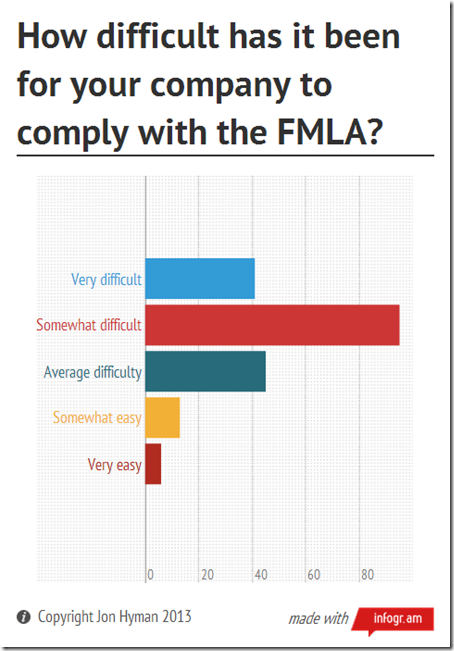The plaintiff in Demyanovich v. Cadon Plating & Coatings (6th Cir. Mar. 28, 2014) suffered from congestive heart failure. He returned from his latest FMLA leave in 2009 with a no-overtime medical restriction. The employer, however, ignored the restriction, kept assigning overtime hours, and denied an early-2010 FMLA request. Demyanovich’s doctor advised him to quit his job and apply for social security benefits. Shortly thereafter, the company terminated him for excessive absenteeism.
In the subsequent FMLA lawsuit, the employer claimed that Demyanovich could not prove him FMLA claim because he could not have returned to his job at the end of the 2010 FMLA leave, had it been granted. The court, however, disagreed:
Although there is ample evidence that Demyanovich might have had difficulty returning to work within twelve weeks of his February 23 request for FMLA leave, it is not indisputable that he would have been unable to do so. Dr. Mussani, Demyanovich’s primary physician, “advised [Demyanovich] to quit work” and seek Social Security benefits, but he did not draft any documentation stating that Demyanovich was categorically unable to continue working. We may not draw the inference, adverse to Demyanovich, that because Dr. Mussani had always cleared Demyanovich to return to work after past examinations, his advice to quit on this occasion demonstrates that Demyanovich was no longer capable of working.According to the FMLA, employees who, at the end of the 12-week leave period, remain “unable to perform an essential function of the position because of a physical or mental condition … [have] no right to restoration to another position under the FMLA.” Thus, if Demyanovich truly could not have returned to work at the end of the FMLA leave, then he would not have a claim. In this case, the court concluded that the employer could not measure that inability prospectively, since Demyanovich presented no medical paperwork to that end.
What are the takeaway from this case?
- When dealing with medical issues under the FMLA, get it in writing. In this case, it appears that the employer was attempting to justify its decision based on information in learned after the fact—that Demyanovich’s doctor recommend that he quit and seek social security benefits based on a total inability to work. Had the company learned this information at the time of the termination from medical information provided by Demyanovich at that time, this case likely would have turned out differently.
- Don’t forget about the ADA. Just because an employee cannot return to work at the end of an exhausted FMLA leave does not mean you can always terminate the employee. Instead, you have an obligation under the ADA to explore, through the interactive process, reasonable accommodations such as temporary light duty or an unpaid leave of absence. Even if you are on solid legal ground to terminate under the FMLA, ignoring your obligations under the ADA will still buy you a lawsuit.




 If I had to rank questions I get from clients in order of frequency, questions on medical leaves would be near, if not at the top of, the list. These questions usually take the form of, “Sally has been out of work on a medical leave for a few weeks (or months), and tells us she needs to be out for a few more. We need to get her work done. Can’t we just replace her and move on?” The easy answer, whether or not you are covered by, or the employee is eligible under, the FMLA, is a big fat “no.”
If I had to rank questions I get from clients in order of frequency, questions on medical leaves would be near, if not at the top of, the list. These questions usually take the form of, “Sally has been out of work on a medical leave for a few weeks (or months), and tells us she needs to be out for a few more. We need to get her work done. Can’t we just replace her and move on?” The easy answer, whether or not you are covered by, or the employee is eligible under, the FMLA, is a big fat “no.”